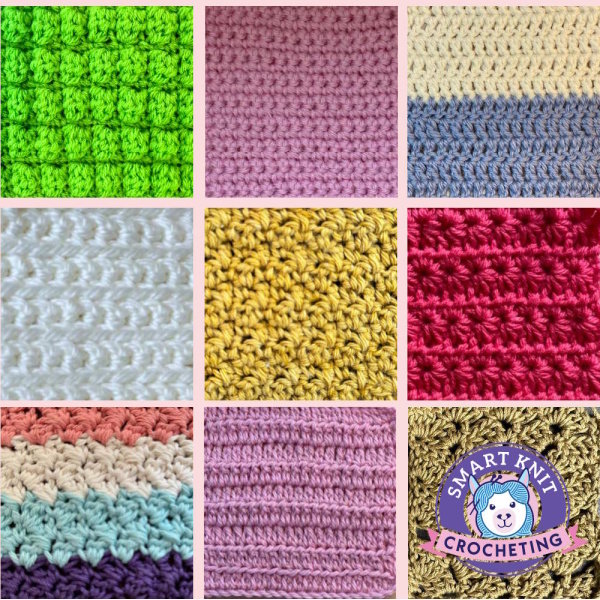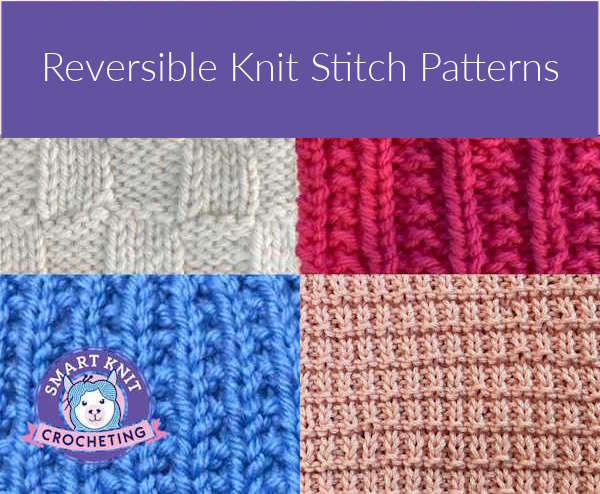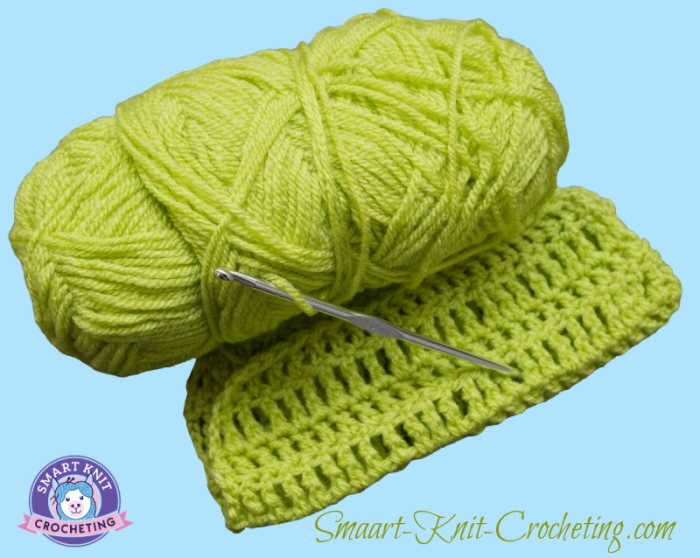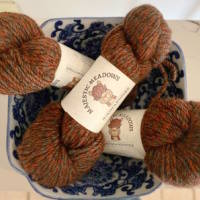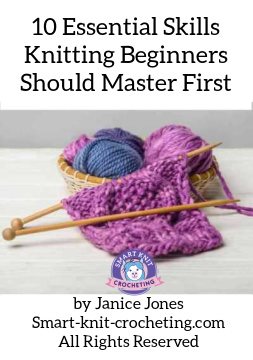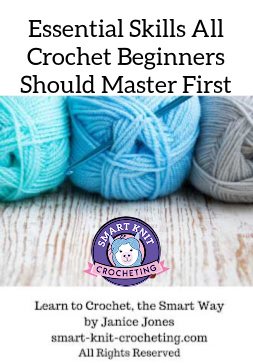The Magic Knot for Knitting and Crochet: A Complete Step-by-Step Tutorial
When it comes to knitting, and crocheting for that matter, joining two yarns seamlessly will make your project look more professional.
There are many different ways to join yarns, but one popular method for achieving this is the magic knot. I’ve also seen it called a pretzel knot and the fisherman’s knot.
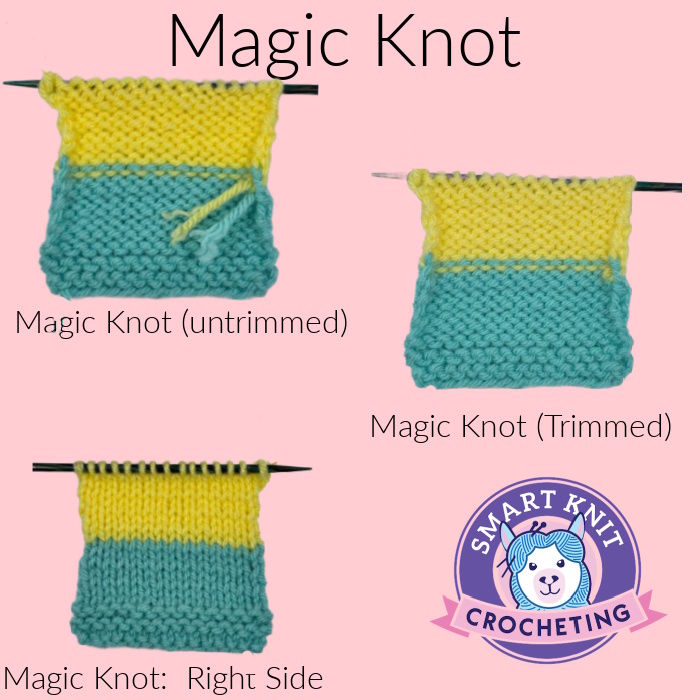
I am going to provide detailed instructions on how to make a magic knot, discuss its benefits, and highlight situations where it might not be the best choice. That way, you can decide for yourself whether you find this method to be perfect for you.
Before I get started, however, I want you to know that this is not the only way to join yarns. Many master knitters prefer to use other methods as they do not like the idea of having knots in their work. To me, this knot reminds me of skeins of yarn that contain knots. I'm sure you know what I'm talking about.
What is the Magic Knot?
The magic knot is a technique used to join two strands of yarn together in a way that is secure and virtually invisible. It is often used by knitters and crocheters to change colors or to add a new skein of yarn without leaving noticeable ends or bulky seams.
Why Use the Magic Knot?
There are many reasons why you might want to use the magic knot.
Seamlessness:
The main advantage of the magic knot is that it creates a smooth, almost invisible join. This is ideal for projects where aesthetic continuity is crucial, such as those featuring striped patterns or color block designs.
Strength:
The magic knot is very secure, reducing the likelihood of your yarns coming apart over time. This is particularly beneficial for items that will undergo frequent use or washing, like clothing or blankets.
Efficiency:
When using the magic knot, there is no need to weave in tails afterward, saving you time at the end of your project.
How to Make a Magic Knot
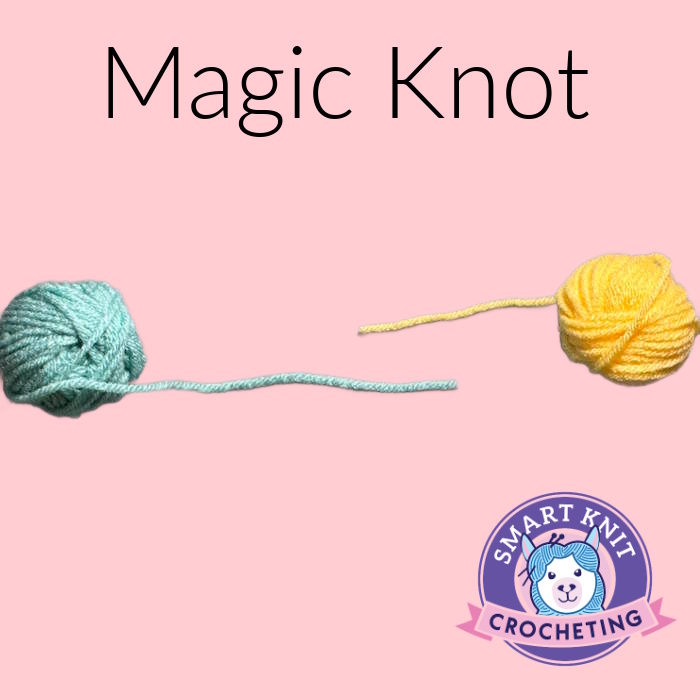 Step 1: Arrange both stands as shown in the photo.
Step 1: Arrange both stands as shown in the photo.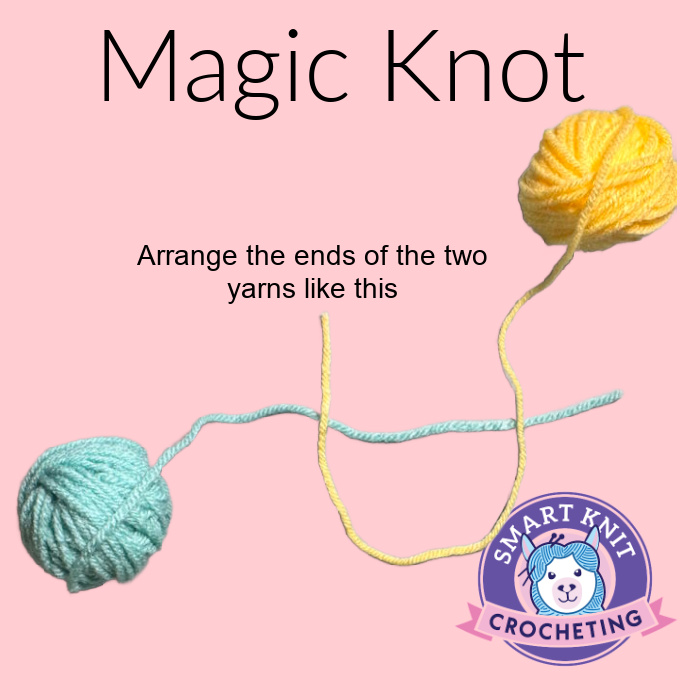 Step Two: Arrange the yarn so that one strand of the yarn (yellow) rests on top of the other strand (green).
Step Two: Arrange the yarn so that one strand of the yarn (yellow) rests on top of the other strand (green).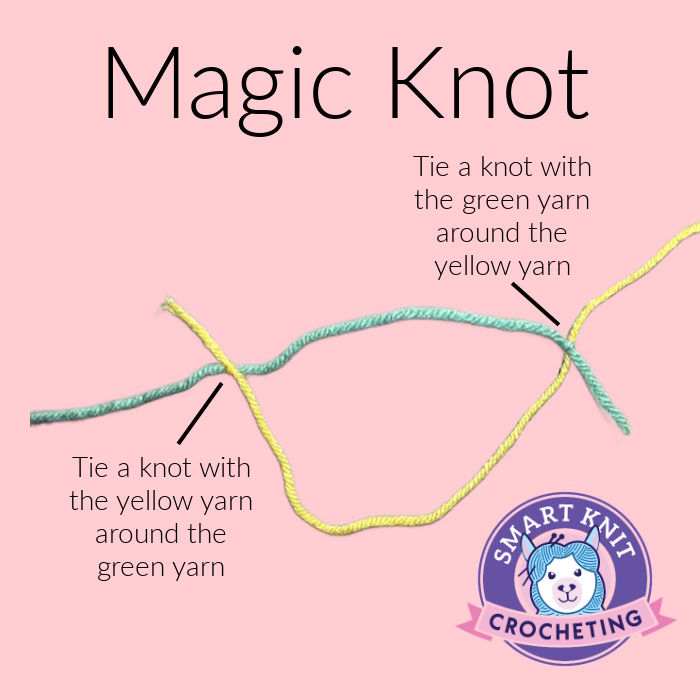 Step Three: Tie a simple knot with the yellow yarn around the strand of the green yarn. Then repeat by tying the green strand around the yellow yarn.
Step Three: Tie a simple knot with the yellow yarn around the strand of the green yarn. Then repeat by tying the green strand around the yellow yarn.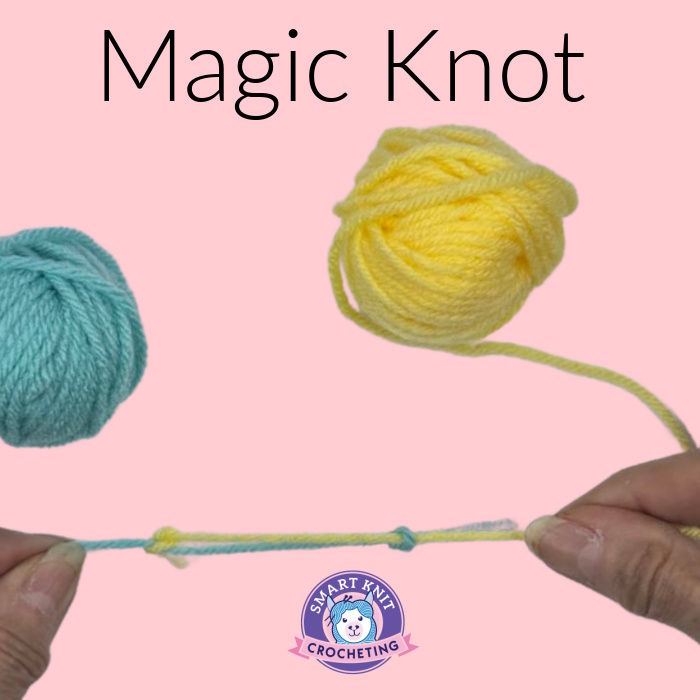 Step Four: Grab the ends of both the green and yellow yarn and pull away from each other, moving the knot to the center.
Step Four: Grab the ends of both the green and yellow yarn and pull away from each other, moving the knot to the center.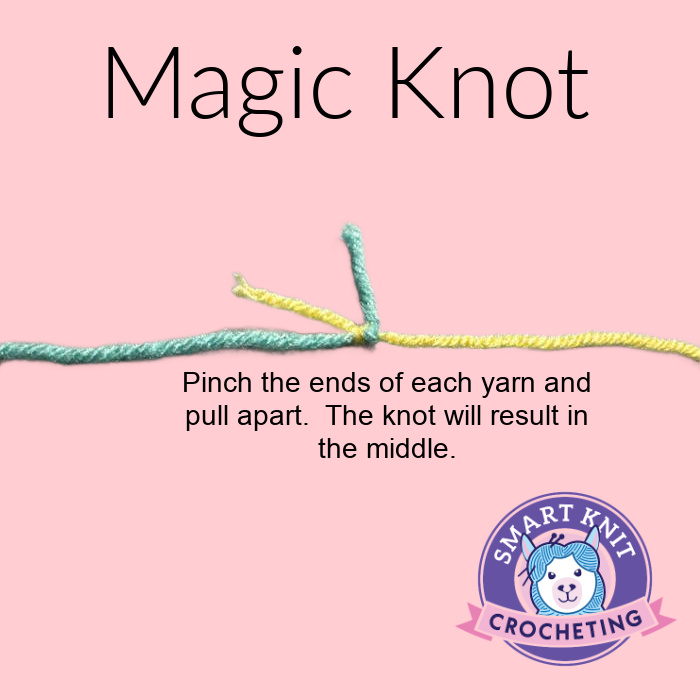 Step Five: Once you pull the yarn as far as it will go, the knot will be in the center.
Step Five: Once you pull the yarn as far as it will go, the knot will be in the center.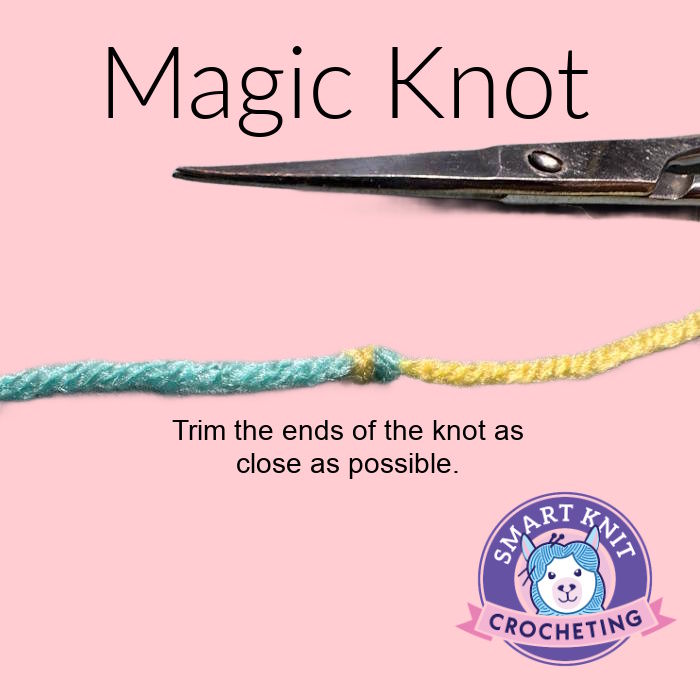 Step Six: Trim off the ends as close as you can.
Step Six: Trim off the ends as close as you can.Benefits of the Magic Knot
- Minimal Bulge: The knots lock each other in a way that keeps the fabric slim, preventing excess bulk.
- Versatility: This knot can be used with almost any type of yarn, from wool to cotton to synthetics.
- Quick: It's a fast way to join yarns, advantageous during large projects.
Possible Drawbacks
The magic knot has many benefits and is easy for absolute beginners to master. However, there are some issues to consider.
Visibility:
While the magic knot is often invisible, it may still create a bump in very delicate or thin knits. For lace patterns or projects that require extreme finesse, this may be noticeable. If these little bumps/knots in the fabric do not cause you stress, that I say, go for it.
Non-Reversible:
Once made, a magic knot is complicated to undo without cutting the yarn. This is not suitable for projects requiring frequent adjustments or for projects where both sides of the fabric will show.
Mixed Yarn Types:
If you're working with significantly different textures or weights of yarn, they might not lock as securely.
Loose Knots:
Magic knots can come loose even though most people consider them to be very secure.
When Not to Use the Magic Knot
If the project will bear significant weight or strain, consider using alternative joining techniques that provide added security, or plan on weaving in the ends.
Avoid using the magic knot with projects where you might to felt the yarn as the knots will show.
I made a baby blanket once where I used the magic knot for joining new skeins of yarn. I was disappointed to find out that the knots loosened after laundering the blanket. It's possible I did not pull tight enough on the knot, but just this one experience soured me on this technique.
But don't take my word for it. Try it on a small project such as a dishcloth, then launder it to see how it turns out. You might have better luck than me.
Frequently Asked Questions about the Magic Knot
Do you still need to weave in ends?
Do you still need to weave in ends?
One of the primary benefits of using the magic knot is that it eliminates the need to weave in ends. Once the knot is securely tightened and the excess tails are trimmed, there are no additional ends that need to be woven into the fabric. This can save time and effort, especially in projects with frequent color changes or multiple yarn joins.
If you do decide to weave in ends, leave longer tails on the ends instead of trimming them tightly.
Can I use the magic knot in crochet?
Can I use the magic knot in crochet?
Absolutely! The magic knot is a popular technique in both knitting and crochet, used to join yarn seamlessly, especially in projects with color changes or when adding a new skein of yarn.
What should I do if the knot slips?
What should I do if the knot slips?
If the knot slips, it may not have been tightened correctly, or the yarn might be too slippery for this knot type. This does happen. In such cases, consider doubling the knot or using a different joining method, like the Russian join or spit splicing for wool yarns.
How can I disguise the knot for a more seamless look?
How can I disguise the knot for a more seamless look?
By ensuring that the knot is pulled tightly and the tails are trimmed close, the knot can be minimized. Additionally, positioning it in less noticeable places, such as near the edge or at the back of your project, can help camouflage any slight bump.
Is the magic knot suitable for beginners?
Is the magic knot suitable for beginners?
Yes, the magic knot is relatively easy to learn and suitable for beginners. It involves basic knot-tying skills and can be mastered easily. In fact, it might be one of the easiest ways to join two yarns.
Will the magic knot hold up through washing?
Will the magic knot hold up through washing?
The magic knot is generally secure enough to withstand washing, particularly if the yarn has some grip. However, for items that will endure frequent washing, it’s a good idea to test on a small swatch first to ensure their durability.
Can the magic knot be used with any yarn?
Can the magic knot be used with any yarn?
The magic knot can be used with most types of yarn, including wool, cotton, and synthetic blends. However, it might not work as effectively with very slippery or delicate yarns, where an alternative joining method may be more secure.
Last Words about the Magic Knot
In conclusion, the magic knot is an excellent solution for seamless yarn joins. Its benefits of ease, efficiency, and nearly invisible finishes make it popular among knitters and crocheters. However, understanding when it is best to apply this method — and when to consider other options — will help you make informed decisions to enhance the quality and durability of your handmade creations.

